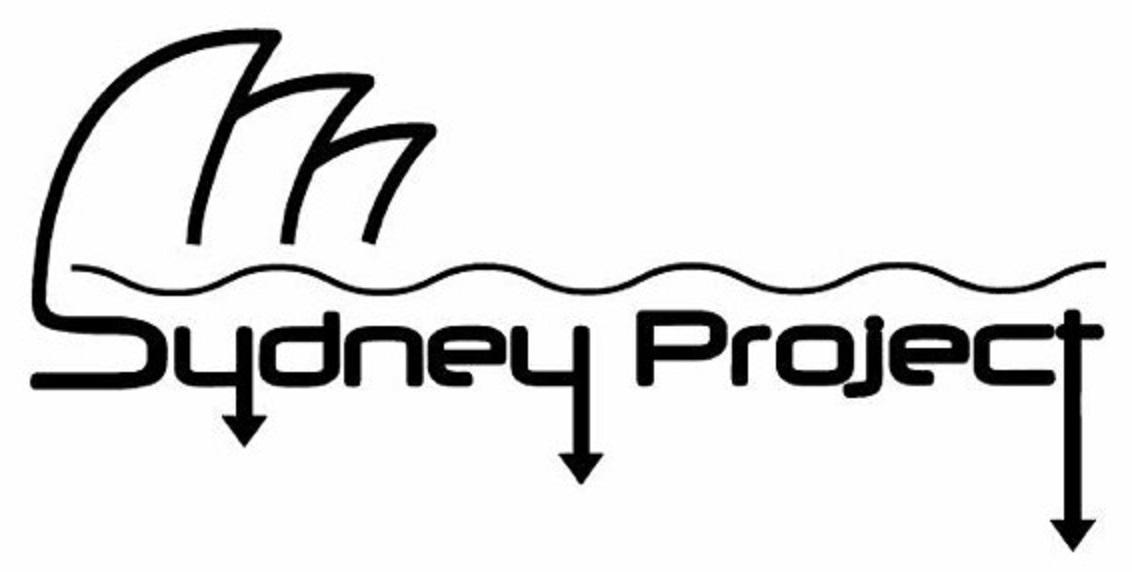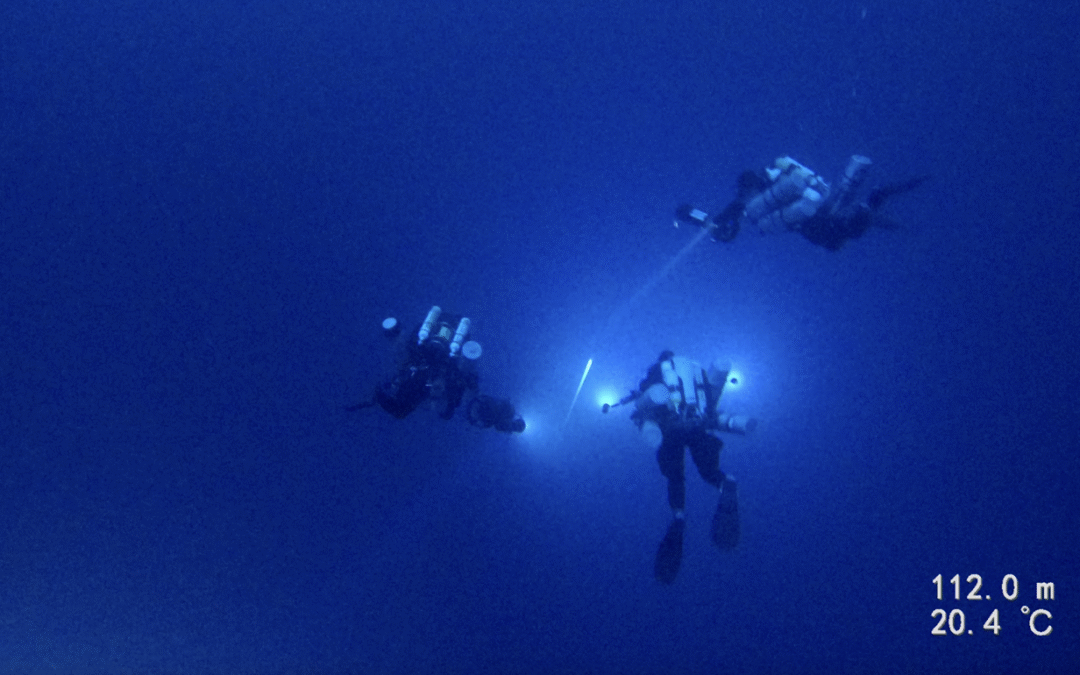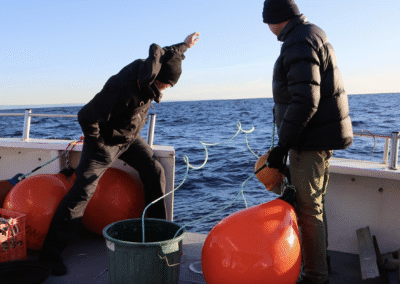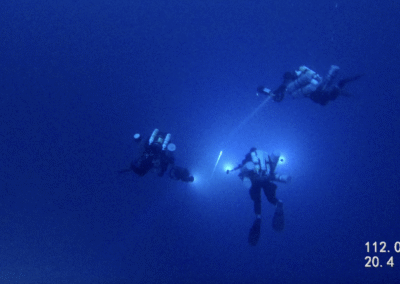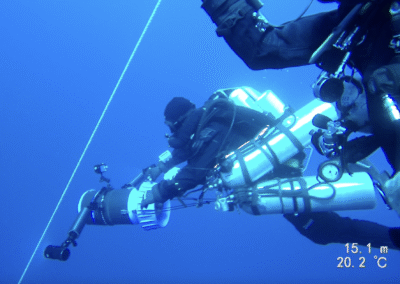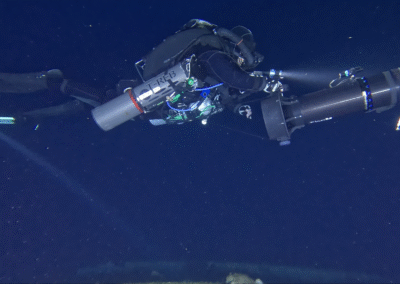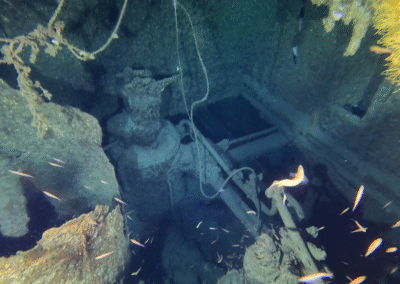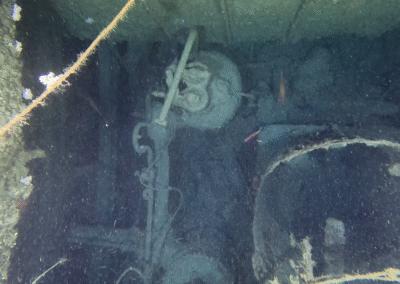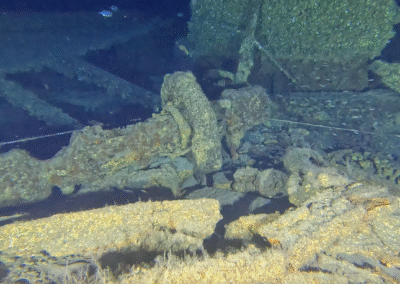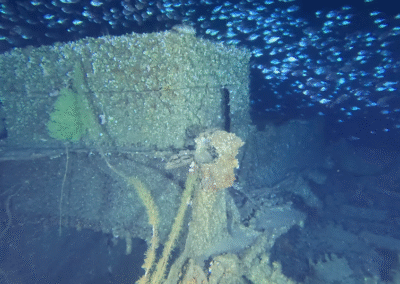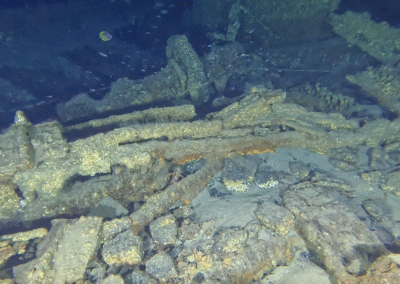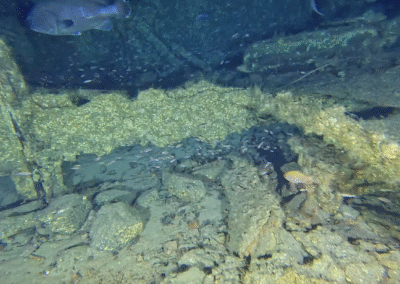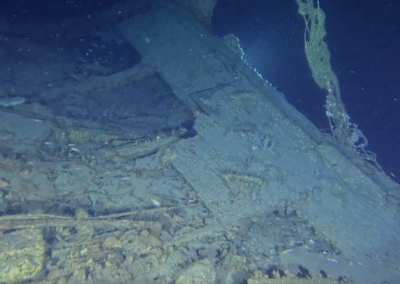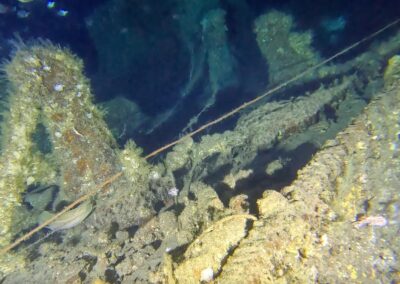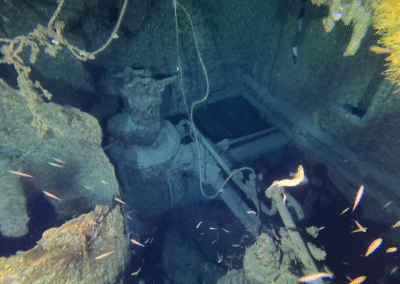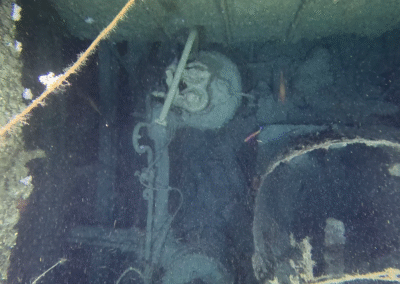After arriving in Port Phillip Bay, Melbourne, in May 1881, the Nemesis was registered by Huddart Parker & Co Pty Ltd, for operations in the inter-colonial coal trade between Newcastle and Melbourne. It was soon after fitted with accommodation of an intermediate standard, and began carrying passengers and cargos between Sydney and Melbourne.
Nemesis remained a passenger carrier until the last years of the century and was then converted back to a collier status operating on the East Coast run.
At the time of its loss, Nemesis had been in service for more than 23 years.
On this final fateful voyage, the SS Nemesis departed Newcastle for Melbourne with coal and coke, under Captain Alex Lusher on Friday 8th July 1904.
Reported as passing Nobbys Head Lighthouse off Newcastle around 1pm, the vessel ran into a strong southerly gale and large swells, making for very slow progress south. The last confirmed sighting of the Nemesis was by the SS Marloo, who passed within a mile of the vessel, off Wollongong at 2pm on Saturday 9th July. Marloo identified no distress or damage to the steamer but noted that it was traveling at low speed of around 1 knot in the poor conditions and laboring under the effort.
By evening, residents of Port Hacking reporting seeing rockets or flares in the dark off the coast, and ominously, the sound of continuous horn blasts of a vessel in distress. Similar horn blasts were heard from residents as far south as Stanwell Park. No positive sightings were made due to poor visibility, nor were there any reports by port authorities or officials.
Wreckage started to wash up on the northern end of Cronulla Beach and was first reported to authorities late on 11 July:
“…Strewn on the beach were pieces of hatchways, splintered and broken, also portions of the bridge deck, the cabin skylights, and the cabin fittings…”
(Brisbane Telegraph Sat 16 July 1904 pg 5).
Over the following weeks several bodies washed ashore at Cronulla Beach or near Boat Beach. They were identified as William Coull, 32; Able Seaman, J. Linklater 34, who resided in Melbourne; James Morrison, the Second Engineer; and two others being unidentified – one of a fireman based on clothing. The bodies were interred in the Sutherland Cemetery (Woronora Memorial Park) (Sydney Morning Herald, Thursday 11 Month 1904, p.3). Their unmarked graves only recently being identified.
In all, 32 people lost their lives on the SS Nemesis that night.
Since this tragic loss, the fate of the vessel has been surrounded in mystery. An initial theory put forward by many (including Captain Webb, Director of the Sydney Office of Huddart Parker,) was that the steamer had struck a reef (Bombora Reef, just to the southward of the entrance to Port Hacking). There were widely different accounts with residents of Manly suggesting they had sighted blue lights fired into the air; and noting more wreckage had washed ashore along Sydney’s northern coastline.
After a hearing over several weeks, the Court of Marine Inquiry found that the Nemesis slipped beneath the waves near where last sighted by the Marloo. But there remained insufficient evidence to show exactly how or why the disaster had occurred.
In May 2022, a wreck was discovered in 164m by Subsea Professional Marine Services. Whilst undertaking a commercial contract to locate bulk cargo containers lost off Sydney, Subsea mapped the wreck with multibeam sonar and deployed a Remote Operated Vehicle (ROV) in challenging conditions. Subsea reported the find to Heritage NSW, the agency responsible for maritime heritage management in NSW. Heritage NSW confirmed the vessel to be a nineteenth century steamer and suggested Nemesis as a possible candidate. Heritage NSW coordinated two additional surveys with Subsea in mid and late 2023, both hampered by strong currents. Imagery suggested the wreck matched Nemesis, and aligned with historic newspaper accounts.
In October 2023, CSIRO deployed the Marine National Facility research vessel RV Investigator over the wreck, undertaking a systematic bathymetric survey and camera investigation.
The loss of Nemesis has been described as one of Sydney’s most enduring maritime mysteries, becoming the ‘holy grail’ of Sydney shipwrecks sought by avid wreck hunters and divers. The loss with all hands in wild seas so close to Sydney attracted significant media attention in 1904. As the sea returned some of the bodies to the shore, grieving families were left with some answers but more lingering questions.
In June 7th 2025, divers from Sydney Project gathered on a cold windy morning in Wollongong Harbour, contemplating the new weather forecast of strong westerly winds in the afternoon, it was decided that it was not a safe option to do such a challenging dive in these conditions.
My CSIRO satellite current charts that I had been monitoring daily for the last 12 months, had been showing minimal current at the site of the wreck, and the week of 18th June was just weather perfection. Our charter boat Aquila of “Wollongong Deep Seas Fishing Charters” doesn’t usually run on Wednesdays, but Audrey heard the desperation in my voice not wanting to miss this golden opportunity and kindly agreed to run the charter for us.
On the morning of 18th June, the team consisting of support crew Britt Shaw, Zachary Hudson and Scott Wyatt, divers David Apperley, Rus Pnevski, John Wooden and myself. We met skipper Bobby and deck hand Jai to load all the gear at 5am and steamed out at 6 am for one and a half hours to the site of the wreck.
Arriving onsite in rather choppy seas, the skipper sounded the wreck nearly immediately. We determined that current was running at half a knot from the south. Dave and I prepared the 180m long shot line for deployment and waited for Rus and skipper to give us the green light to throw it in. After the boat was positioned up current, we deployed the shot line and waited for it to settle down, so we could check if it’s secure near the wreck. Once this was confirmed, we deployed the decompression station which caused the shot line to drag away from the wreck. We had no choice but to pull up the deco station and shot line back on board for a reset. This consumed precious daylight time, as it was a good one hour before we had it back in the water. This time to avoid dragging the shot line, we sent a support diver into the water to attach deco station to the shot line and avoid dragging it with the boat. This worked very well and next time we adapt our technique from this lesson and use longer shot line as well.
With excitement in the air, divers started to get dressed in drysuit with heated undersuits, gearing up with rebreathers and stage tanks. Three of us were diving JJ’s, with one Hammerhead. Rus was using his T-Reb to compliment his JJ, as a bailout rebreather. The rest of us were using open circuit gas for bailout, with our usual staged decompression gas on the deco station. We planned for 18 minutes of bottom time.
Water was so clear it was very deceiving to tell distances, 40+ was a rough estimation. As we went past 150m everyone commented feeling some effects of HPNS (High Pressure Nervous Syndrome) the effects of helium under pressure, which gives you tremors and shaking in hands and other parts of the body. I felt it in the face and chest area, but this settled down on the bottom.
Towards the main deck I took notice the Fore main deck bitts near bridge bulkhead, rigged up with derrick cranes line, and I had a little close encounter by snagging one of these lines in my stages for a short moment, not something you want to do at 160 metres with 9 minutes of bottom time!
The rest of deco was uneventful, with Rus watching the Titanic movie on his phone in its water proof housing. There may have been a broader audience for certain intimate scenes… there is always a first on deco’s!
The delayed start to the dive meant that Rus and I exited out of the water last in total darkness. The support crew were exceptional to keep us safe and keep an eye on the deco station to retrieve it. We arrived back in Wollongong harbour exhausted but with huge smiles on our faces, that after so much time preparing, planning and persevering: we managed to finally see the wreck and return with footage to help with the further study of the wreck.
This was the most amazing team effort that I have personally been part of. Every part of this dive was like one organism working on so many levels, and I can’t even relay enough pride and gratitude to each one of my dear friends, with whom I have had the privilege to be working with on this.
My thanks also to Audrey, Bobby and Jai of Aquila fishing charters, and Tim Smith and Brad Duncan from NSW Heritage office for all their support, and also to Matt Kimber from CSIRO.
We are now looking to return to the wreck to complete a photogrammetry scan, to build further on the work that CSIRO have done, and to help answer those lingering yet tantalising questions of the mysteries of the SS Nemesis.
Get in touch if you or your business want to be involved in sponsorship support
of the next phase of this incredible mission.
Watch some of the footage:
